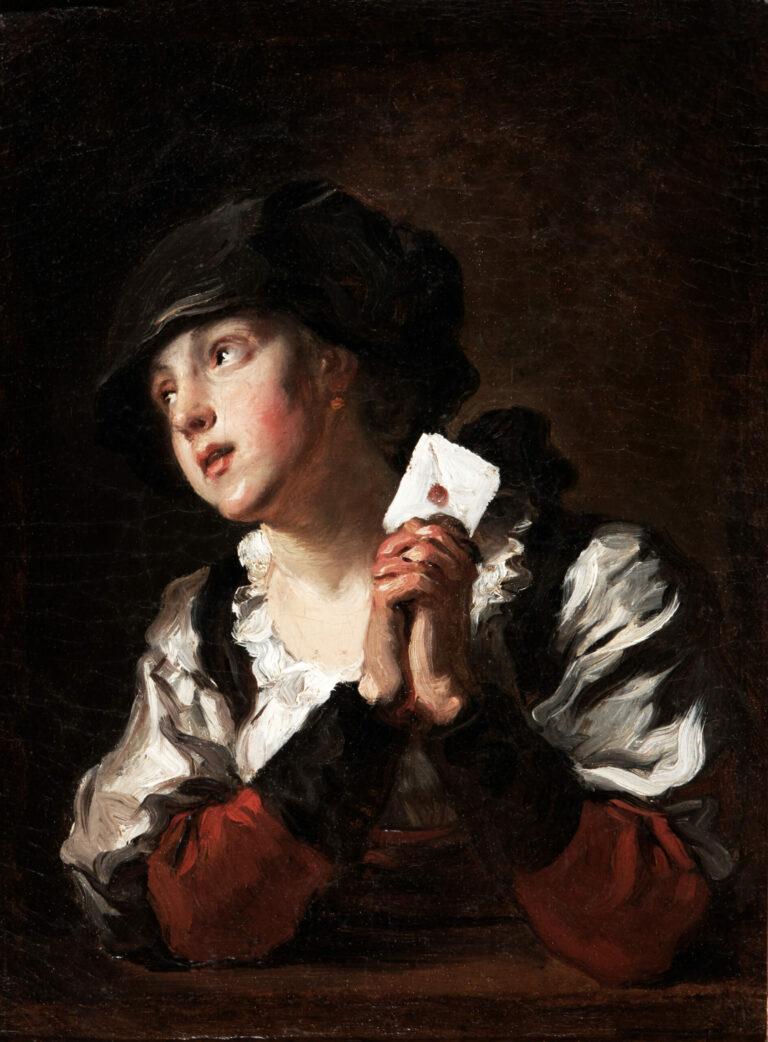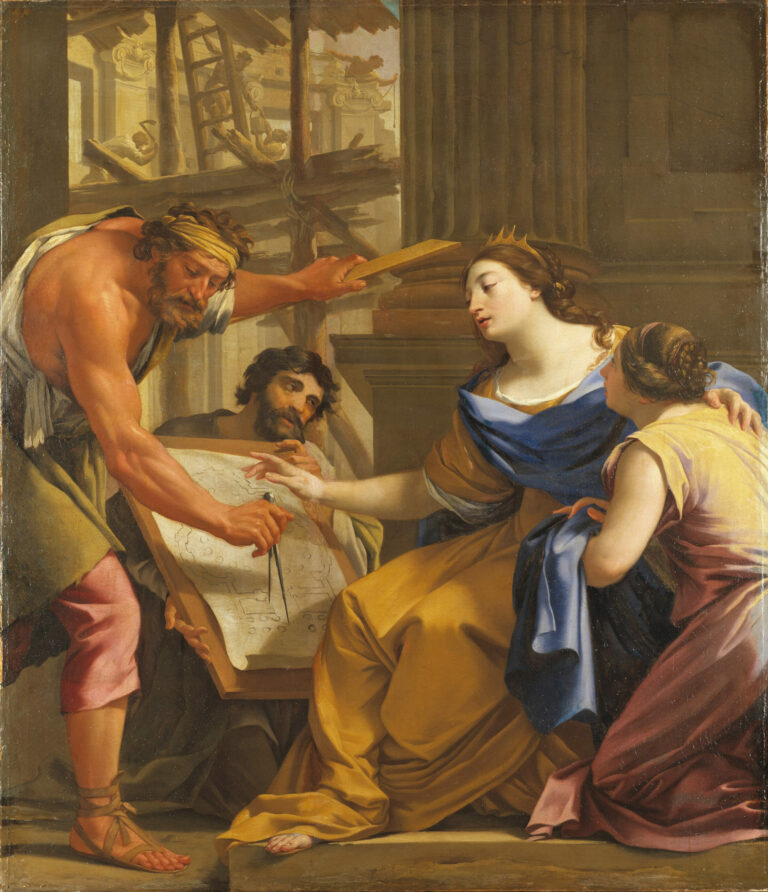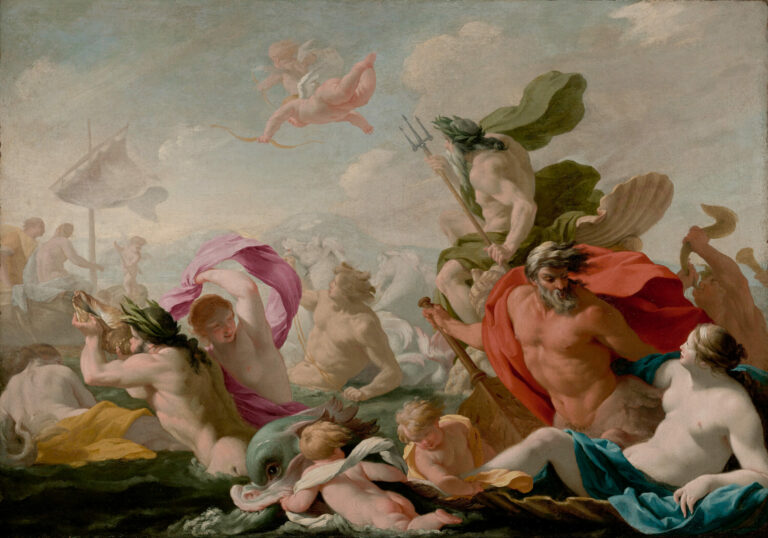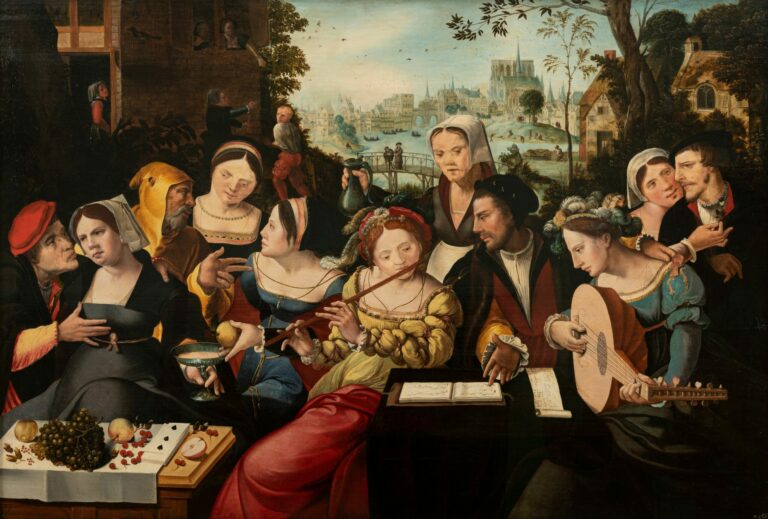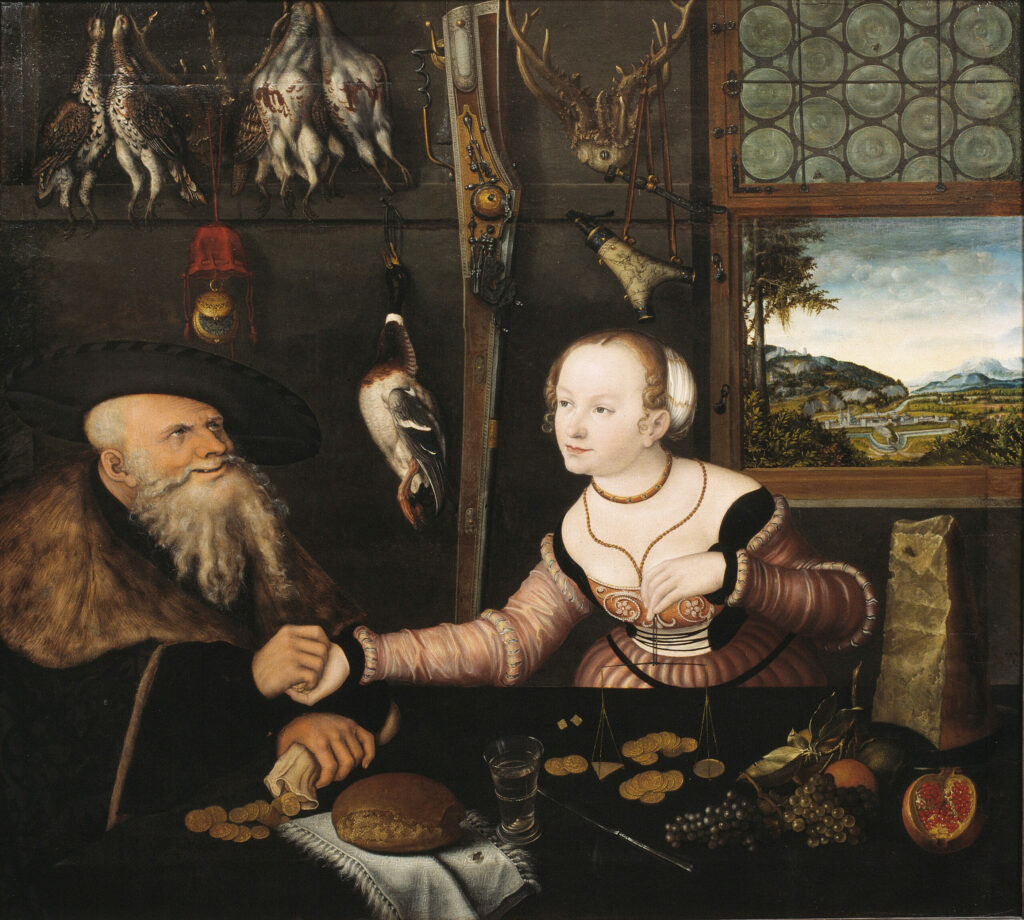
This work by Lucas Cranach the Elder illustrates the moralizing theme of the “ill-matched couple,” recurrent in 16th-century Northern art.
The composition contrasts an elderly bearded man with a young elegantly dressed woman, in a transaction with explicit connotations. The striking contrast between the man’s advanced age and his companion’s youth underscores the vanity of senile lust. Symbolic attributes enrich the moral reading: the scales held by the woman evoke the biblical Last Judgment, reminding us that every act will be weighed in the afterlife. The bourgeois interior, meticulously detailed, contrasts with the moral mediocrity of the scene. This work demonstrates Cranach’s art of combining social criticism with technical virtuosity, characteristic of Northern humanism.
Further information
- The Ill-Matched Couple, by Lucas Cranach the Elder, 1532
- 108 x 119 cm, Oil on linden wood
- Nationalmuseum, Stockholm, displayed in room 1421, Cabinet
- https://collection.nationalmuseum.se/en/collection/item/17208/
Lucas Cranach the Elder (1472-1553), a major figure of the German Renaissance, developed a distinctive style combining Northern precision with Mannerist elegance. Born in Kronach in Franconia, he traveled to Vienna to perfect his art in the early 1500s. Established in Wittenberg from 1505 as court painter to the Electors of Saxony, he directed a flourishing workshop there for nearly fifty years, notably training his sons Hans and Lucas the Younger. An intimate friend of Martin Luther, he became the official portraitist of the Protestant Reformation, immortalizing the figures of the reformist movement. Cranach also cultivated a sophisticated secular art, in moral allegories, mythological scenes, and court portraits. A shrewd entrepreneur, he diversified his activities by running a pharmacy and participating in the wine trade, accumulating considerable wealth. His style durably influenced the Saxon school and marked 16th-century German art.

